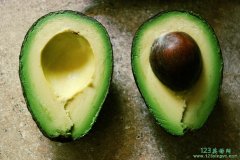This brief book is aimed at high school students
编辑:高中作文网 阅读 次This brief book is aimed at high school students, but speaks to anyone learning at any stage of life.
Its formal, serious style closely matches its content, a school-masterly book on schooling. The author, W. H. Armstrong, starts with the basics: reading and writing. In his opinion, reading doesn’t just mean recognizing each word on the page; it means taking in the information, digesting it and incorporating it into oneself just as one digests a sandwich and makes it a part of him. The goal is to bring the information back to life, not just to treat it as dead facts on paper from dead trees. Reading and writing cannot be completely separated from each other; in fact, the aim of reading is to express the information you have got from the text. I’ve seen it again and again :some-one who can’t express an idea after reading a text is just as ineffective as someone who hasn’t read it at all.
Only a third of the book remains after that discussion, which Armstrong devotes to specific tips for studying languages, math, science and history. He generally handles these topics thoroughly(透彻地) and equally, except for some weakness in the science and math sections and a bit too much passion(激情) regarding history to his students, that was a hundred times more than my history teachers ever got across. To my disappointment, in this part of the book he ignores the arts. As a matter of fact, they demand all the concentration and study that math and science do, though the study differs slightly in kind. Although it’s commonly believed that the arts can only be naturally acquired, actually, learning the arts is no more natural than learning French or mathematics.
My other comment is that the text aged. The first edition apparently dates to the 1960s—none of the references(参考文献)seem newer than the late 1950s. As a result, the discussion misses the entire computer age.
These are small points, though, and don’t affect the main discussion. I recommend it to any student and any teacher, including the self-taught student.
63. According to Armstrong, the goal of reading is to________.
A. gain knowledge and expand one’s view
B. understand the meaning between the lines
C. experts ideas based on what one has read
D. gets information and keeps it alive in memory
64. The author of the passage insists that learning the arts_________.
A. requires great efforts
B. demands real passion
C. is less natural than learning maths
D. is as natural as learning a language
65. What is a shortcoming of Armstrong’s work according to the author?
A. Some ideas are slightly contradictory.
B. There is too much discussion on studying science.
C. The style is too serious.
D. It lacks new information.
66. This passage can be classified as________.
A. an advertisement
B. a book review
C. a feature story
D. A news report
63. 答案:C
考点::
解析:题干的关键词是goal of reading,回原文定位到第二自然段,第二自然段有两处出现了关键词,一处说“The goal is to bring the information back to life, not just to treat it as dead facts on paper from dead trees. ”,另一处说“the aim of reading is to express the information you have got from the text. ” C选项正好与第二处原文相呼应,题干里的goal of reading呼应原文的aim of reading,C项的express ideas呼应原文的express the information,based on what one has read呼应原文的information you have got from the text。虽然我们不可否认读书的目的也包括A和D两个选项提到的获取知识,扩大视野,但由于原文没有提及,所以不能成为正确选项。
64. 答案:A
65. 答案:D
考点::细节理解
解析:从第三段可以得出答案
66. 答案:B
考点::考查文章体裁
解析: 通过阅读每段的首句,不难发现第一自然段讲本书的写作对象(This brief book is aimed at high school students),二、三自然段讲本书的写作内容(The author, W. H. Armstrong, starts with the basics … only a third of the book remains after that discussion …),第四自然段是作者对本书的评价(My other comment is that …),最后一段总结,向读者推荐这本书(I recommend it to any student and any teacher)。把握住了全文的结构,就不难看出这篇文章是一篇书评了。因此正确答案为B。



